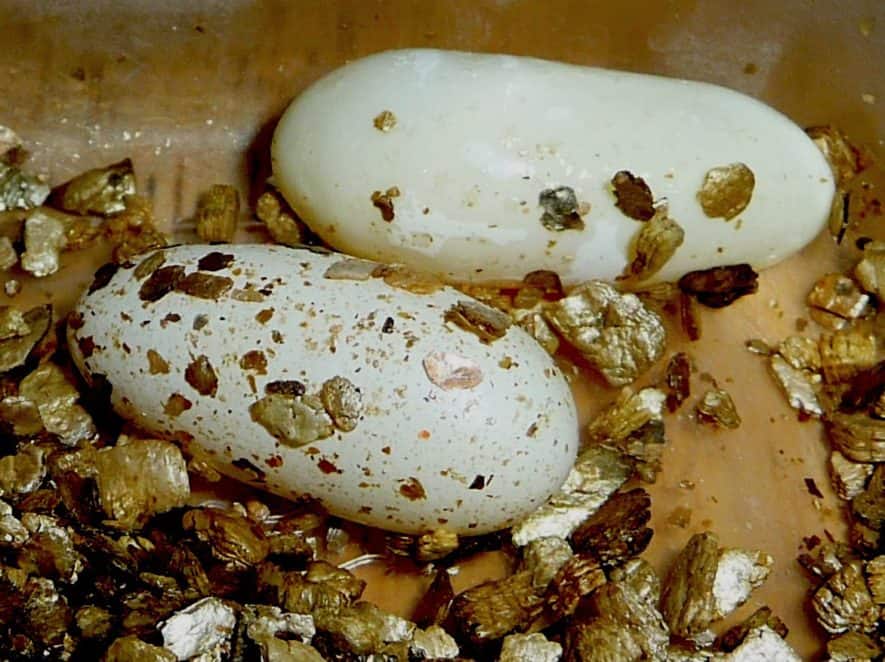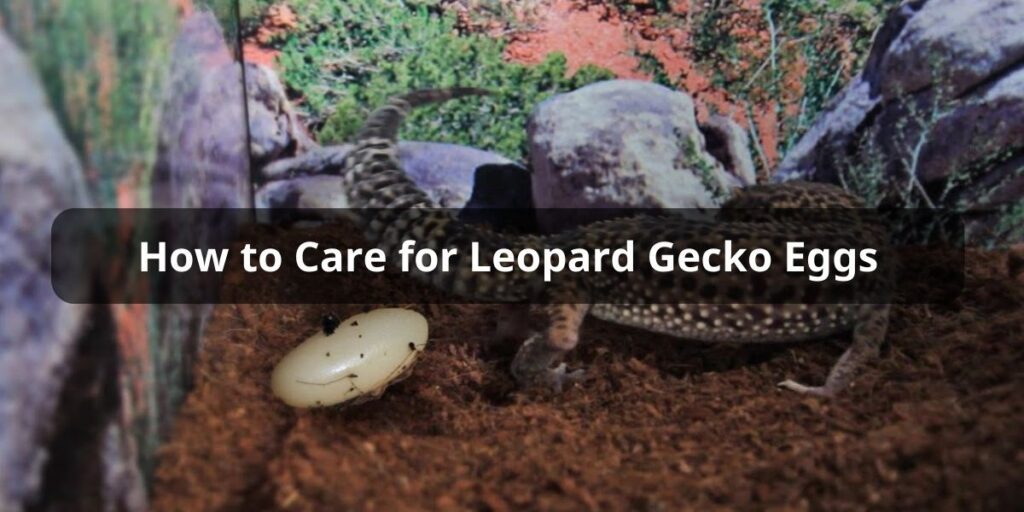Caring for leopard gecko eggs requires attention to detail and an understanding of the incubation process. As leopard geckos continue to grow in popularity as pets, more and more owners will find themselves caring for eggs. With proper care, the eggs have a high chance of hatching into healthy baby leopard geckos. Here is a comprehensive guide on how to care for leopard gecko eggs.
Setting Up the Incubator
An incubator provides the ideal environment for leopard gecko eggs to develop. The three key factors to control are temperature, humidity, and airflow.
Temperature
Leopard geckos need an incubation temperature between 82-88°F. The ideal range is 84-86°F. Temperatures outside of this range can lead to developmental issues or death of the embryos.
Use a thermometer to monitor the temperature inside the incubator. Make adjustments as needed to maintain the correct temperature range. Placing the incubator in a room away from vents, windows, and exterior walls helps prevent fluctuations.
Humidity
Humidity inside the incubator should be between 40-60%. Low humidity under 40% can cause the eggs to dehydrate. High humidity over 60% increases the risk of bacterial or fungal growth on the eggshells.
Add a hygrometer to monitor humidity levels. Water reservoirs or damp sponges can be used to raise humidity if needed. Be sure to monitor for condensation and mold growth.
Airflow
Proper airflow prevents pockets of stale air and maintains stable oxygen levels. Position a small fan to gently circulate air without directly blowing on the eggs. Holes or mesh panels allow airflow in and out of the incubator.
Egg Care Basics

Once the incubator environment is ready, carefully place the leopard gecko eggs inside. Here are some tips for proper egg care during incubation:
- Do not turn or reposition leopard gecko eggs. Leave them stationary.
- Write the lay date on each egg in pencil so you know when to expect them to hatch.
- Do not open the incubator often. Only open when monitoring conditions or making adjustments.
- Discard any eggs that collapse, develop mold, or show no signs of veins developing after a few weeks. They are nonviable.
- Avoid direct light exposure or jarring movements that could harm the developing embryos.
A few days before expected hatching, prepare a brooder setup for the hatchlings. This gives newly hatched babies a warm, humid enclosure to thrive in.
Hatching and Post-Hatch Care
It takes 45-60 days for leopard gecko eggs to hatch at ideal incubation temperatures. When the big day arrives:
- Do not assist hatchlings emerging from eggs unless they struggle for over 12 hours. This helps build strength.
- Leave hatchlings in the incubator for 24 hours to fully absorb yolk sacs. Then transfer to the brooder.
- Provide very small live insects for food, no bigger than the space between the hatchling’s eyes.
- Remove any unhatched eggs after 70 days. Open carefully to check for dead embryos.
- Monitor hatchlings closely for health issues like infections, misaligned jaws, or exposed yolk material. Seek veterinary care if any problems appear
Conclusion
With the right incubator setup and careful egg monitoring, leopard gecko eggs can hatch successfully. Adjusting temperature and humidity promptly prevents lethal issues. Let the eggs develop fully until hatchlings emerge healthy and strong. Proper hatchling care gives them the best start in life. Following these essential tips will lead to an rewarding experience raising baby leopards from eggs.
FAQs
Are there any common signs of problems or infertility in leopard gecko eggs?
Common signs of problems or infertility in leopard gecko eggs include mold growth, shriveling, and abnormal discoloration. Infertile eggs may remain uniformly white, lacking the visible veins seen in fertile eggs.
What steps should I take if I suspect that some leopard gecko eggs are infertile?
If you suspect some leopard gecko eggs are infertile, it’s essential to remove them from the incubator to prevent potential contamination. Discard these eggs responsibly. Continue incubating only the viable, fertile eggs to ensure a successful hatch.
How long does it take for leopard gecko eggs to hatch, and what should I look for as hatching approaches?
Leopard gecko eggs typically take 45 to 60 days to hatch, depending on temperature and humidity. As hatching approaches, you may notice dimpling of the eggs, veins becoming less visible, and hear chirping or scratching sounds from inside the egg, indicating the hatchlings are preparing to emerge.
What should I prepare in advance for the arrival of leopard gecko hatchlings?
Prepare a proper enclosure for the hatchlings with suitable substrate, hiding spots, and the right temperature and humidity. Have a small supply of appropriate-sized insects, clean water sources, and calcium supplements ready. Minimize stress and ensure a gentle, quiet environment for the new hatchlings.
Can you provide tips for maintaining a stable incubation environment for leopard gecko eggs?
To maintain a stable incubation environment for leopard gecko eggs, use a reliable incubator with precise temperature control (around 82-88°F) and high humidity. Use a suitable substrate and maintain regular humidity checks. Avoid frequent handling of the eggs and maintain a consistent incubation temperature throughout the process.



